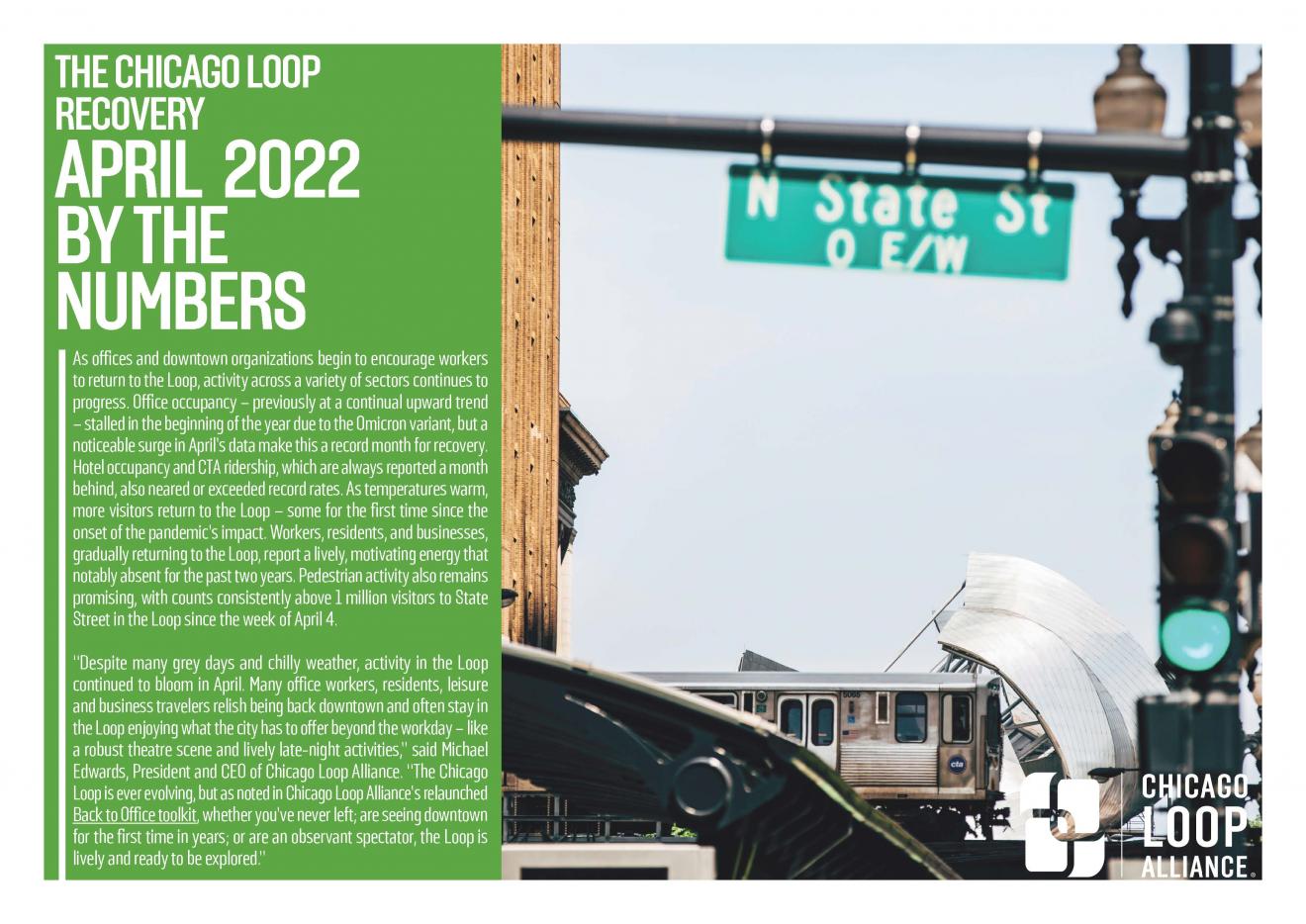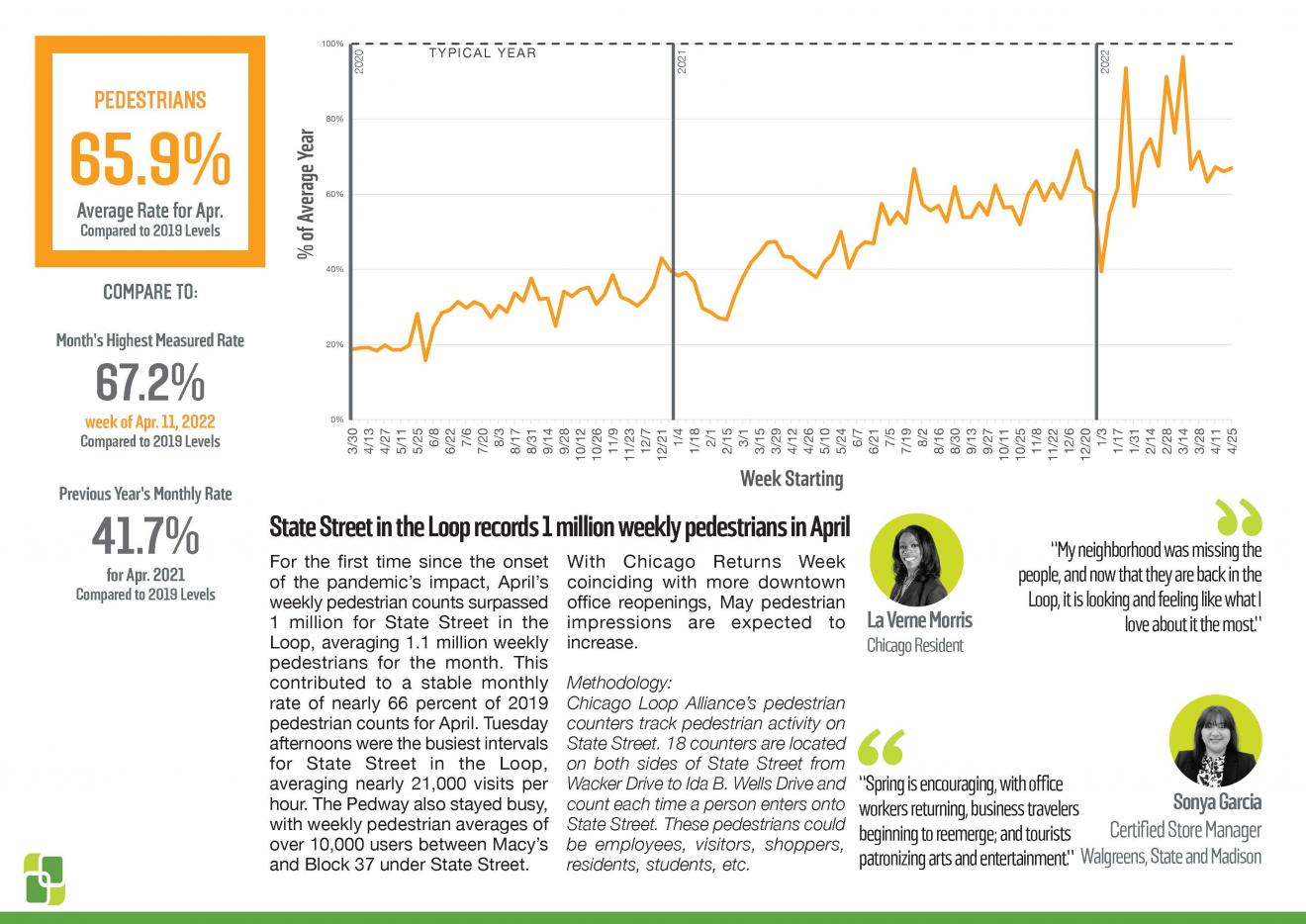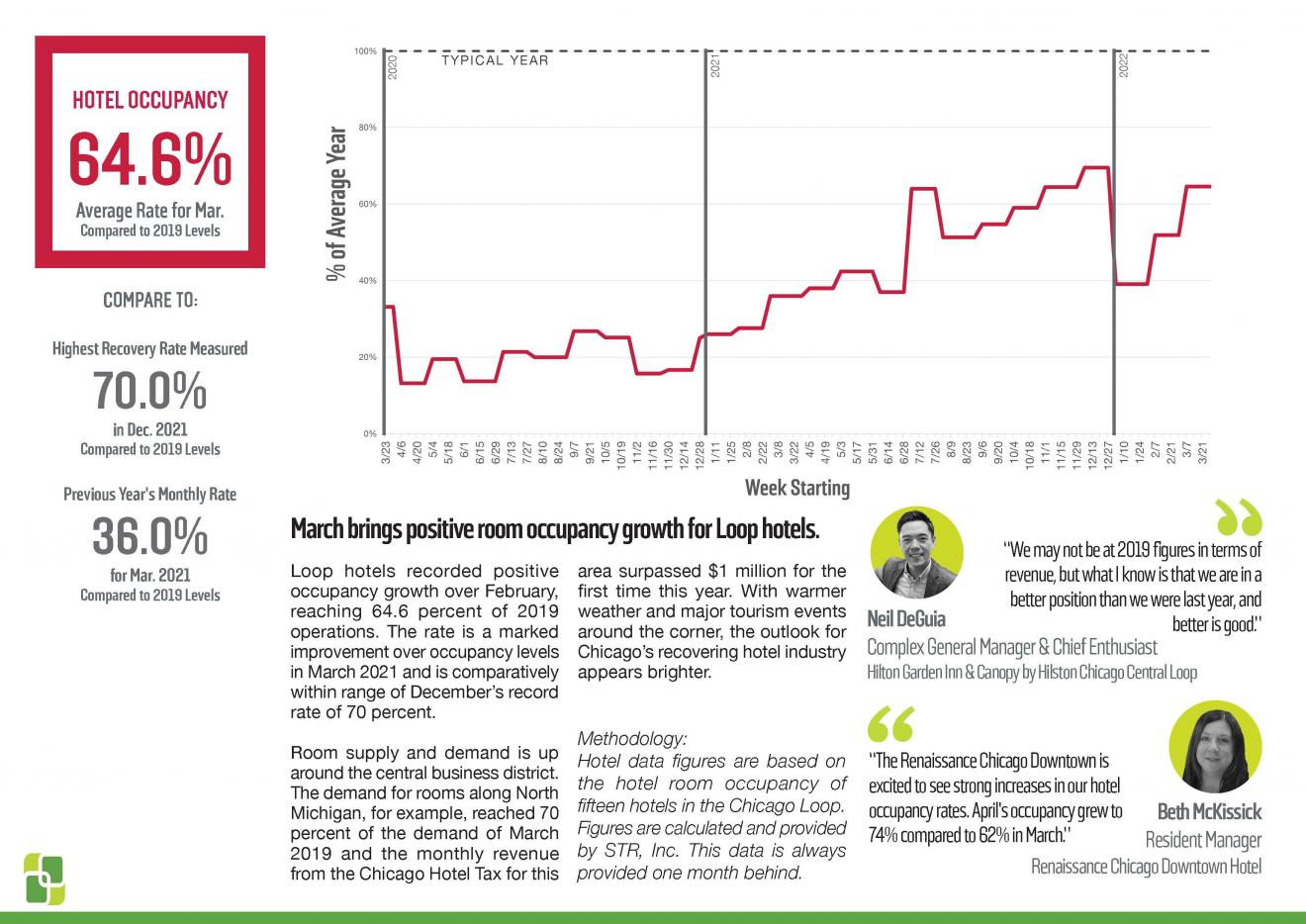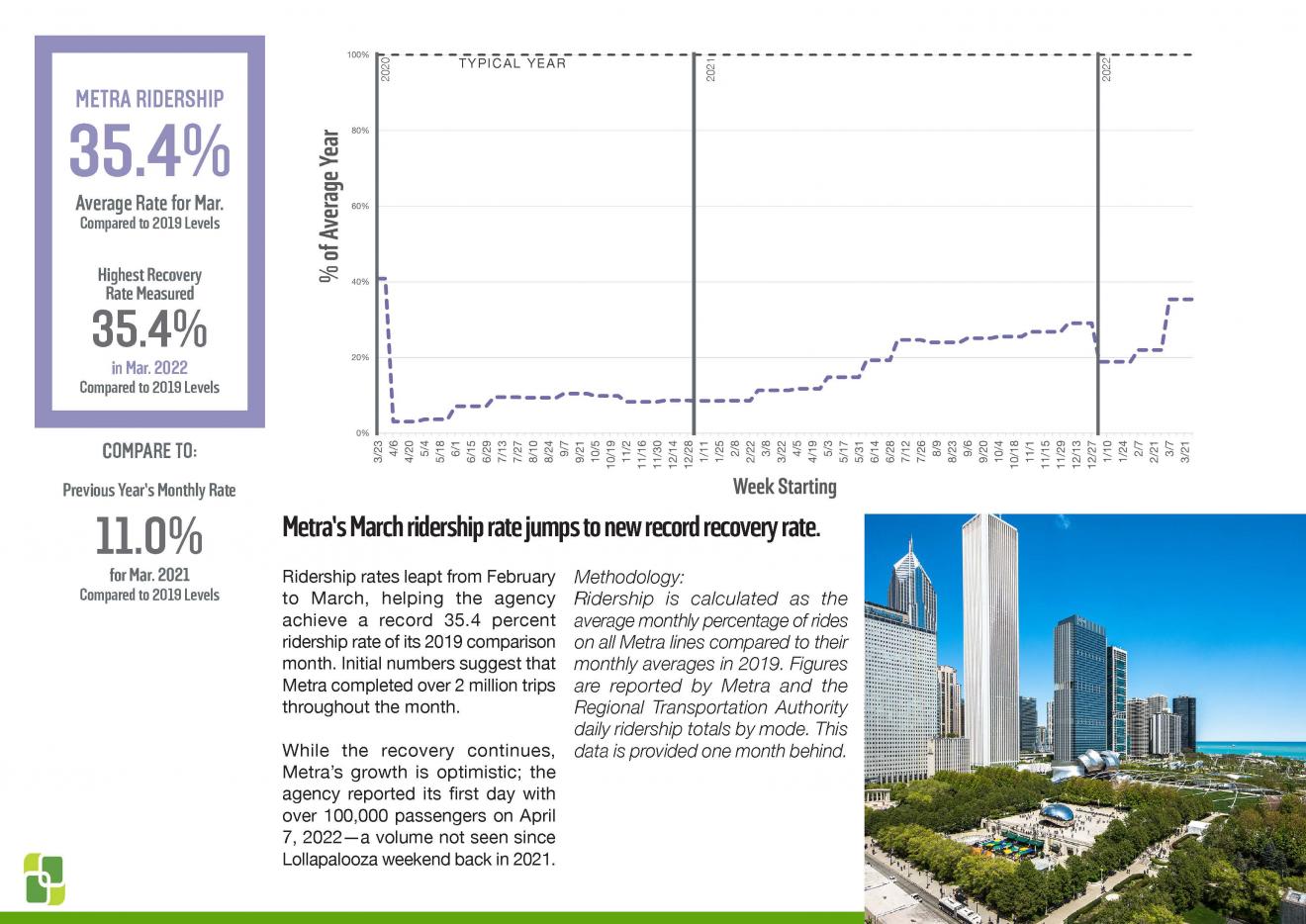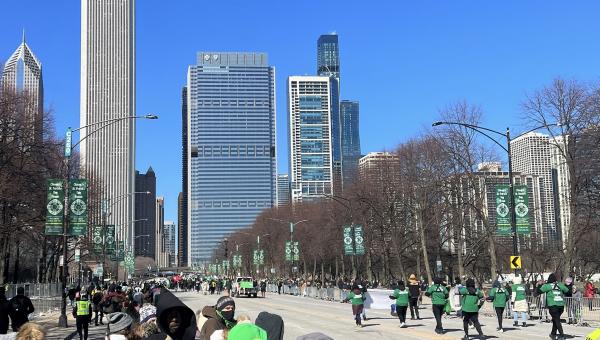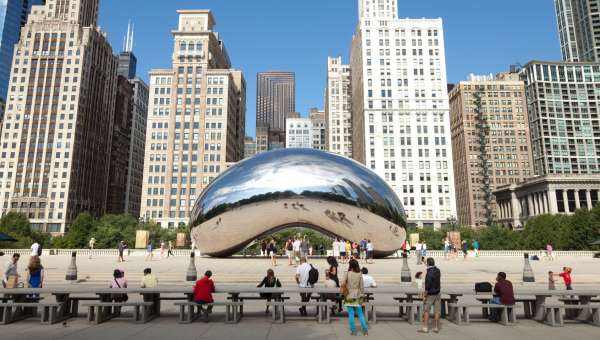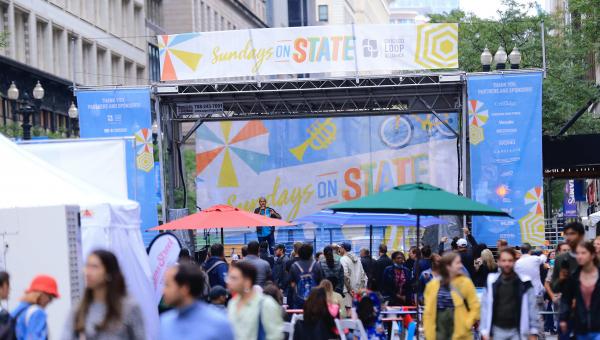Posted 2 years ago
5 MIN READ – Chicago Loop Alliance (CLA) released its April report on downtown activity, using a variety of data sources to track operations during COVID-19, as it has done monthly since July 2020. The report tracks COVID-19 positivity rates, pedestrian activity, parking volumes, hotel occupancy, number of office workers on-site and more. The data indicates that office occupancy, parking reservations and Metra ridership reached record recovery rates, with parking reservations consistently reaching 100% recovery for a year. View the full April report here.
As offices and downtown organizations begin to encourage workers to return to the Loop, activity across a variety of sectors continues to progress. Office occupancy – previously at a continual upward trend – stalled in the beginning of the year due to the Omicron variant, but a noticeable surge in April’s data make this a record month for recovery. Hotel occupancy and CTA ridership, which are always reported a month behind, also neared or exceeded record rates. As temperatures warm, more visitors return to the Loop – some for the first time since the onset of the pandemic’s impact. Workers, residents, and businesses, gradually returning to the Loop, report a lively, motivating energy that notably absent for the past two years. Pedestrian activity also remains promising, with counts consistently above 1 million visitors to State Street in the Loop since the week of April 4.
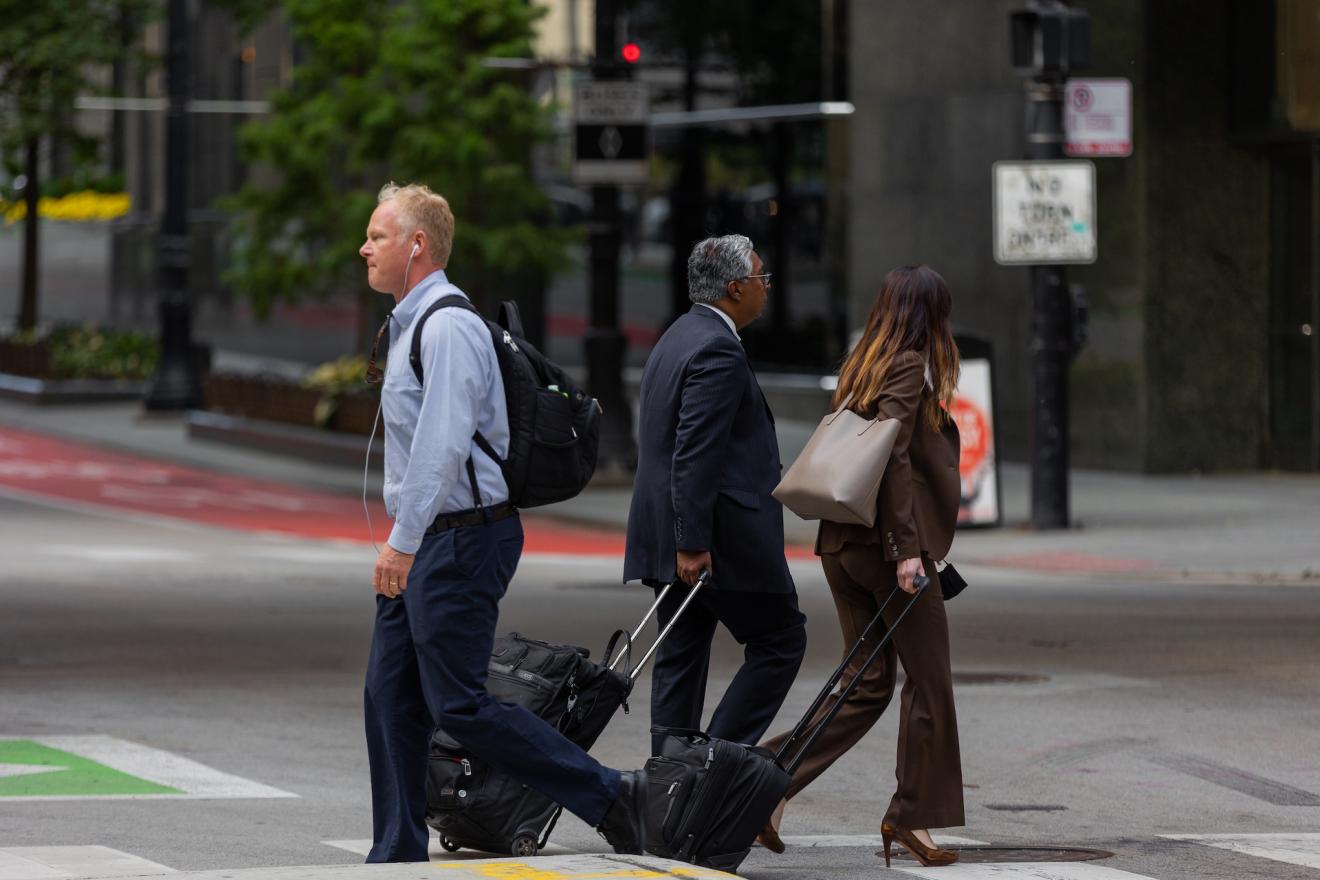
“Despite many grey days and chilly weather, activity in the Loop continued to bloom in April. Many office workers, residents, leisure and business travelers relish being back downtown and often stay in the Loop enjoying what the city has to offer beyond the workday – like a robust theatre scene and lively late-night activities,” said Michael Edwards, President and CEO of Chicago Loop Alliance. “The Chicago Loop is ever evolving, but as noted in Chicago Loop Alliance’s relaunched Back to Office toolkit, whether you’ve never left; are seeing downtown for the first time in years; or are an observant spectator, the Loop is lively and ready to be explored.”
Pedestrian activity
For the first time since the onset of the pandemic’s impact, April’s weekly pedestrian counts surpassed 1 million for State Street in the Loop, averaging 1.1 million weekly pedestrians for the month. This contributed to a stable monthly rate of nearly 66 percent of 2019 pedestrian counts for April. Tuesday afternoons were the busiest intervals for State Street in the Loop, averaging nearly 21,000 visits per hour. The Pedway also stayed busy, with weekly pedestrian averages of over 10,000 users between Macy’s and Block 37 under State Street.
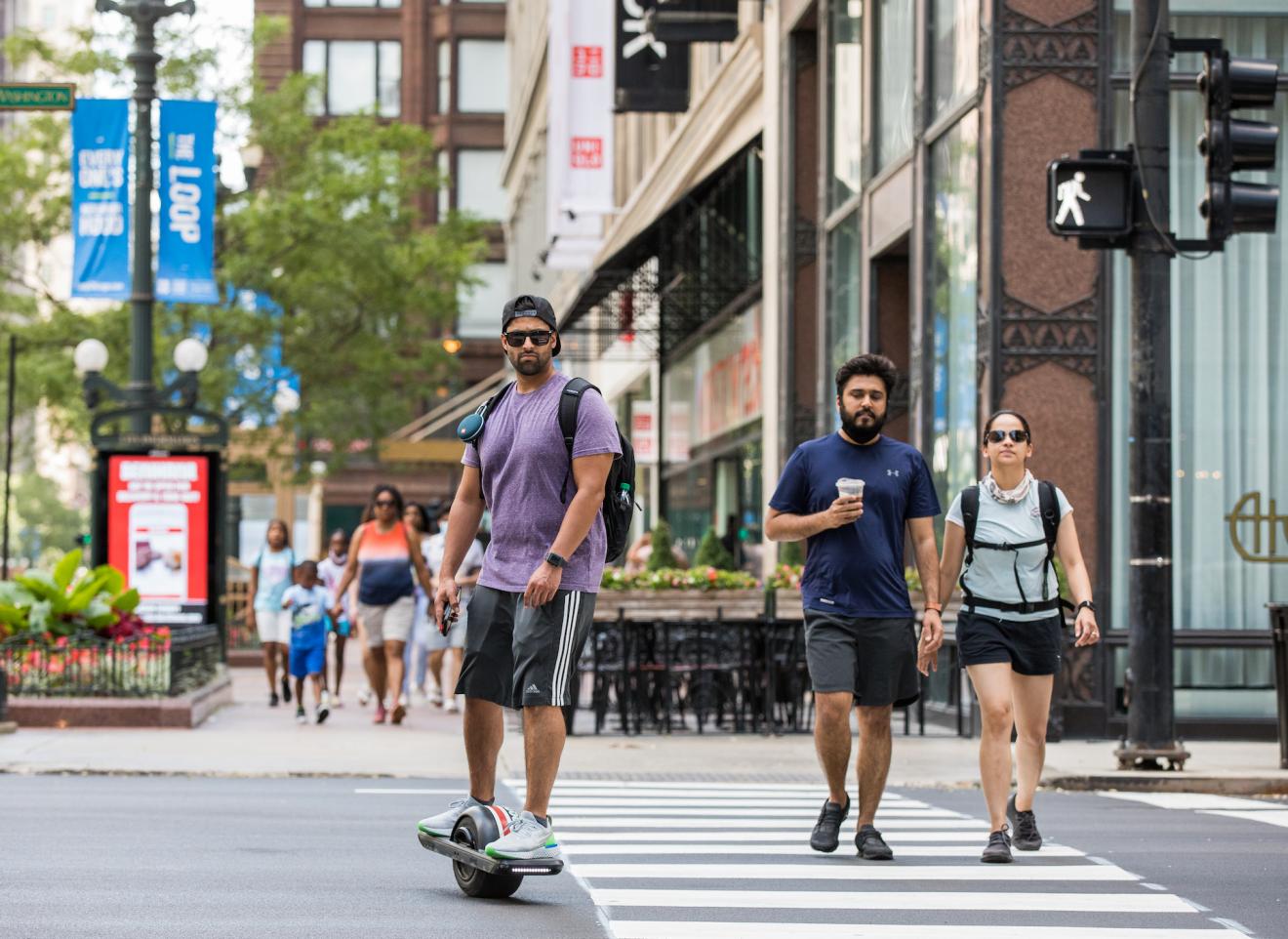
With Chicago Returns Week coinciding with more downtown office reopenings, May pedestrian impressions are expected to increase.
"Activity in the Loop is considerably better than this time last year,” said Sonya Garcia, Certified Store Manager of Walgreens, State and Madison. “Spring is encouraging, with office workers returning, business travelers beginning to reemerge; and tourists patronizing arts and entertainment. Walgreens is excited about the pace of pedestrians throughout the Loop."
“Things downtown are definitely on an upswing and the palpable energy of the Loop is coming back stronger than ever,” said La Verne Morris, Chicago resident. “You can see more people outside on the streets; walking and talking with friends; shopping and eating. My neighborhood was missing the people, and now that they are back in the Loop, it is looking and feeling like what I love about it the most.”
Office occupancy
After reaching the 40 percent occupancy milestone last month, Chicagoland’s offices remained above this level during April. Office occupancy reached a new recovery rate record of 44.2 percent of their 2019 levels, pushing the monthly average to 42.4 percent of their 2019 occupancy. Compared to the 17 percent occupancy rate from April 2021, the city’s office occupancy rate has more than doubled since last year. After a steady climb in the latter half of 2021, office occupancy saw a significant dip in January and February due to the Omicron variant, however, as organizations encourage office workers to return downtown, it is of note that the office occupancy metric has seen the most significant growth in April.
Chicagoland’s occupancy rate moved to sixth place of the nation’s ten largest working metro areas. The rate is most reflective of the occupancy rates in the Los Angeles, Washington, D.C., and Philadelphia metros.
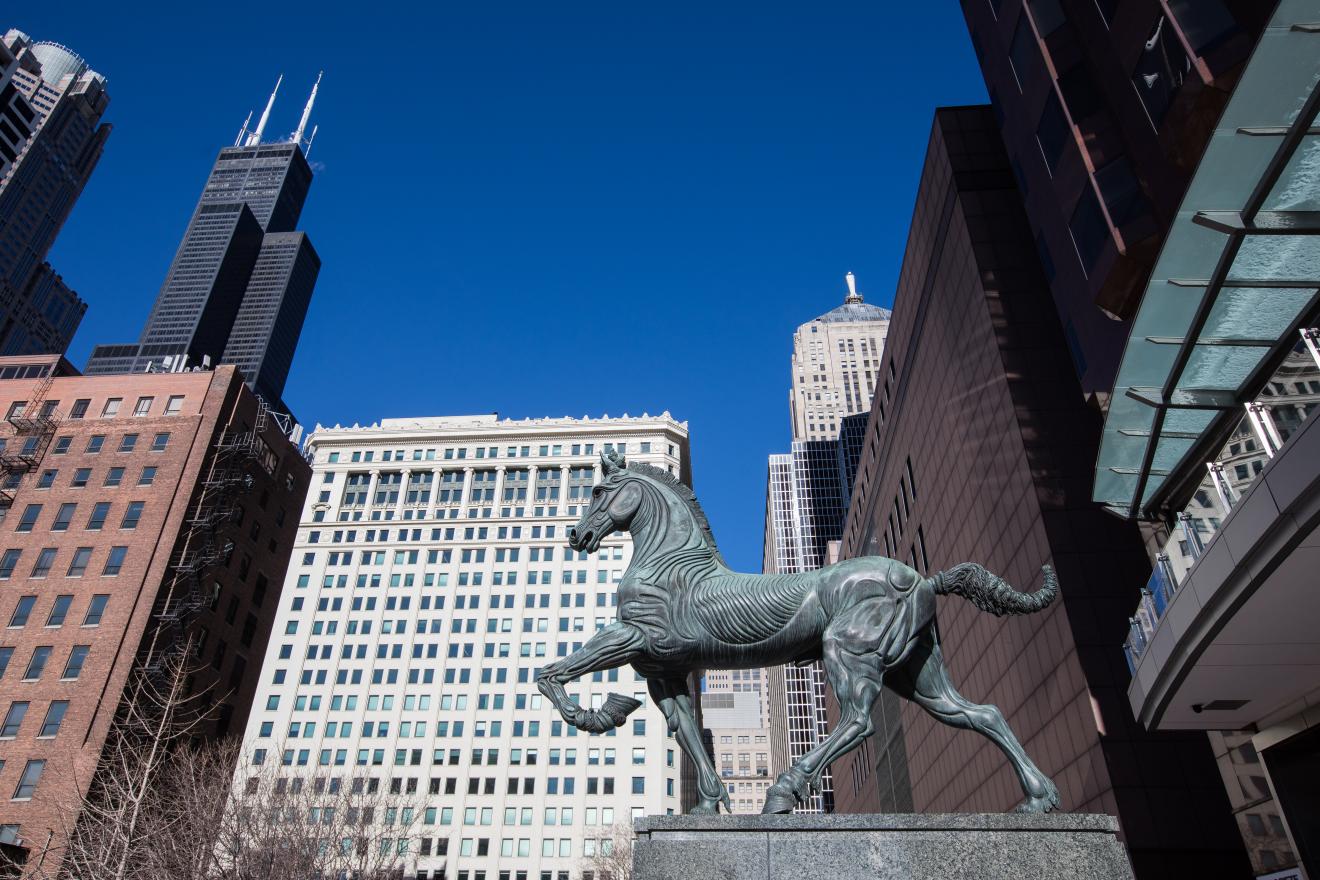
Hotel occupancy
Loop hotels recorded positive occupancy growth over February, reaching 64.6 percent of 2019 operations. The rate is a marked improvement over occupancy levels in March 2021 and is comparatively within range of December’s record rate of 70 percent.
Room supply and demand is up around the central business district. The demand for rooms along North Michigan, for example, reached 70 percent of the demand of March 2019 and the monthly revenue from the Chicago Hotel Tax for this area surpassed $1 million for the first time this year. With warmer weather and major tourism events around the corner, the outlook for Chicago’s recovering hotel industry appears brighter.
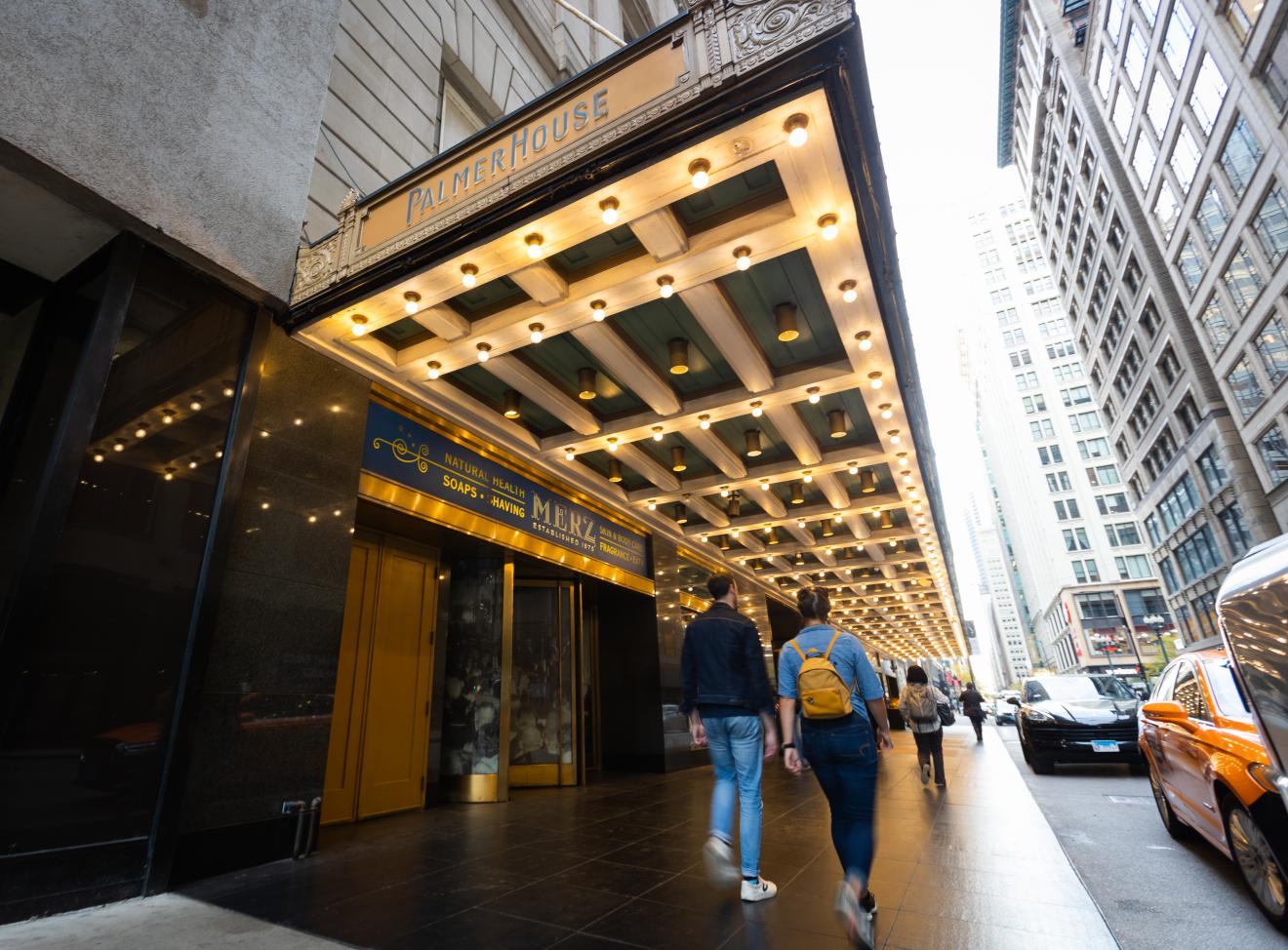
“There are a lot of things our hotel, our industry, our city should be excited about. Hotel lobbies are looking full again; bars and restaurants are packed,” said Neil DeGuia, Complex General Manager and Chief Enthusiast of Hilton Garden Inn and Canopy by Hilton Chicago Central Loop. “We know we still have a ways to go, but these are signs that travel is back. As a city, as an industry, we may not be at 2019 figures in terms of revenue, but what I know is that we are in a better position than we were last year, and better is good.”
“The Renaissance Chicago Downtown is excited to see strong increases in our hotel occupancy rates. April’s occupancy grew to 74% compared to 62% in March,” said Beth McKissick, Resident Manager at Renaissance Chicago Downtown Hotel. “We expect occupancy rates to continue to improve as we approach the summer months and as Chicago welcomes more summer leisure and business travelers.”
CTA ridership
Once available, April and May numbers are expected to show a significant increase, but CTA bus and rail ridership remained stable throughout March, averaging 50.8 percent of 2019 ridership levels. Ridership was highest during the week of March 14, when the agency averaged 671,000 daily trips. The number of trips in 2022 has increased monthly for CTA, with 20.5 million completed during March. Compared to a year ago, when the ridership rate was a third of the agency’s 2019 expectations, March’s 2022 rate is close to the agency’s highest recovery rate measured in late January.

“As we emerge from the pandemic, CTA’s daily ridership levels continue to increase as more and more riders return to the system,” said CTA President Dorval R. Carter Jr. “We recognize that many customers’ schedules and travel patterns have shifted, and we continue to look at ways to provide service to best meet customer demand. Our commitment to providing a reliable, affordable, and convenient transit experience hasn’t wavered.”
Metra ridership
Ridership rates leapt from February to March, helping the agency achieve a record 35.4 percent ridership rate of its 2019 comparison month. Initial numbers suggest that Metra completed over 2 million trips throughout the month.
While the recovery continues, Metra’s growth is optimistic; the agency reported its first day with over 100,000 passengers on April 7, 2022—a volume not seen since Lollapalooza weekend back in 2021.
Parking reservations and garages
With corrected figures from the provider received this month, parking reservations in the Loop have remained above 100 percent of their 2019 levels since late April 2021.
Parking garages declined marginally in April, perhaps as some folks returned to public transit, but drivers into the Loop improved the year-long rolling average. The monthly rate of 61 percent of 2019 operations for April is within striking distance of the all-time recovery rate set in March.
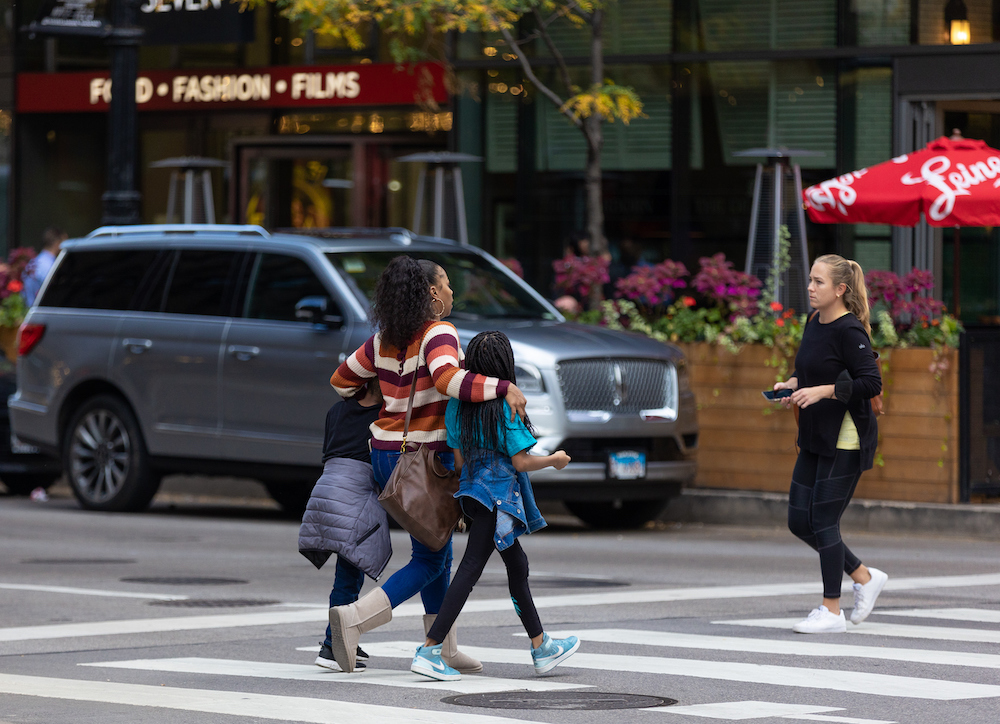
For those Loop workers who continue to return downtown, Chicago Loop Alliance has created a Back to Work Toolkit that can be found at LoopChicago.com/BackToOffice. The toolkit includes insider tips for working downtown in the Loop for those who never left, as well as those who are returning or want to stay in the know. Find useful information on how to safely get downtown; what’s new in the Loop; what the Loop looks like these days; lunch and happy hour spots; and more.
Chicago Loop Alliance invites people to share their experiences downtown on social media using #BackInTheLoop and #ChicagoReturns.

